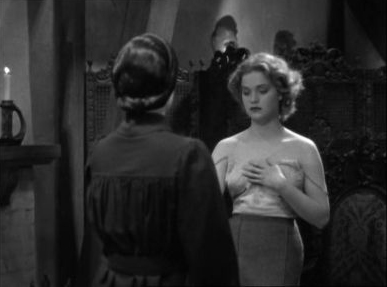In observance of that autumn spell when we celebrate the primal, compulsive instinct of fear, Rainestorm once more highlights 31 days of spooky scares to season the eerie atmosphere of Halloween.
For those who tuned in last year, I subjected you to a daily dose of diabolical dread and devilish distress. Just as every good horror movie deserves an inferior sequel, I offer this follow-up of also-rans, not bads, and perhaps a couple of you’ve-gotta-be-kidding-mes.
Unleashed: 1936

What evil lurks: In many ways this is superior to Tod Browning’s lifeless original. Gloria Holden plays it straight as the infamous count’s feminine offspring, infusing his undead lineage, perhaps for the first time, with the plaintive anguish that would follow vampires into the late 20th century and beyond. Her Countess Zaleska yearns to be free of her undead burden, disdaining her unquenchable thirst for blood. Her character could be seen as the blueprint for Lawrence Talbot’s Wolf Man, lamenting her curse while simultaneously yielding to it. Her conflict gives her a complexity that was missing from Lugosi’s creature of the night. Her desperation drives the story and she becomes for the first time in the Universal canon a tragic vampire. This film is also noteworthy for its rather frank lesbian themes, particular for the time.
Highlight from hell: In the film’s most controversial scene, the countess attempts to combat her urges by facing them head on with an unsuspecting ingenue.
Terrifying trivia: Though he does not actually appear in the film, Bela Lugosi participated in publicity photos for its promotion.
Diabolical dialogue: “You know, this is the first woman’s flat I’ve been in that didn’t have at least twenty mirrors in it.”
Daughter of: Really?
Shoddy sequel syndrome: I blame James Whale for starting it with Bride of Frankenstein, but that doesn’t dismiss the nauseating “comic relief” that passes between Otto Kruger and Marguerite Churchill.


You must be logged in to post a comment.